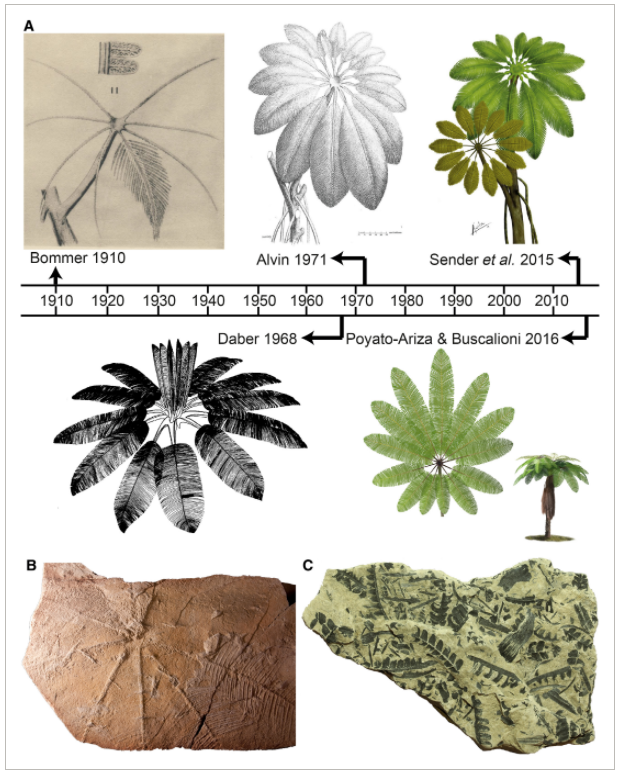Investigación
New insights into the affinities, autoecology, and habit of the Mesozoic fern Weichselia reticulata based on the revision of stems from Bernissart (Mons Basin, Belgium)
Candela Blanco‐Moreno, Anne‐Laure Decombeix, Cyrille Prestianni
The Mesozoic is a key period in fern evolution, with the rise of most modern families. Weichselia reticulata is a widely distributed Jurassic–Cretaceous fern that has been suggested to belong to the Matoniaceae or possibly the Marattiaceae. The most accepted classic whole‐plant reconstruction for this species is based on stem and foliage material from the Barremian–Aptian locality of Négresse (Bernissart, Mons Basin, Belgium). In this work, two of these stems are revised and analysed using computed tomography, providing new information on their internal anatomy and external morphology. Weichselia reticulata has a unique anatomy, distinct from all other extant or fossil ferns. Stem external morphology suggests adaptations to stressful environments, due to the scale insertions, and a thick cortex. Especially noteworthy is the presence of structures interpreted as aerophores or nectaries at the base of putative roots and petioles that could suggest a need for extra ventilation of the frond or interactions with animals. Although these new results do not settle the question of the systematic affinities of Weichselia, they provide new information about its autoecology and allow us to test the validity of previous whole‐plant reconstructions.
New insights into the affinities, autoecology, and habit of the Mesozoic fern Weichselia reticulata based on the revision of stems from Bernissart (Mons Basin, Belgium)
